ANDROGENETIC HAIR LOSS IN MEN AND WOMEN. MODERN METHODS OF QUICK RECOVERY. REAL RESULTS IN PRACTICE (BEFORE AND AFTER).
INTRODUCTION
Androgenetic alopecia is increased hair loss leading to complete baldness. This type of disease is more common in men. But trichologists note that in recent years, male pattern baldness has been found in more than 40% of female patients who have contacted them. ⠀
Androgenetic alopecia in women proceeds differently than in men: the hairline is preserved in the forehead area, the loss within the fronto-parietal zone is uniform and not so pronounced.Выделяют три модели андрогенетической алопеции:
- Hamilton model - thinning and thinning of hair in the parietal zone and expansion of the frontotemporal angles, rather characteristic of men, which is observed in women in menopause or with hyperandrogenism;
- Ludwig model - extensive thinning of the hair within the crown with the preservation of the hairline in the forehead;
- Olsen model or "Christmas tree" - thinning and thinning of the hair of the central part of the head with a lesion of the hairline in the forehead.
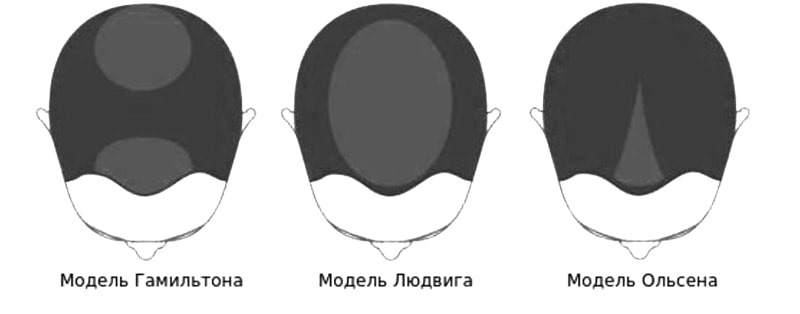
After examining 468 patients, the German dermatologist Ludwig identified three degrees of hair thinning in the fronto-parietal zone:
- noticeable thinning of the hair and expansion of the parting,
- pronounced thinning of the hair,
- hair is completely lost (occurs in less than 5% of women).
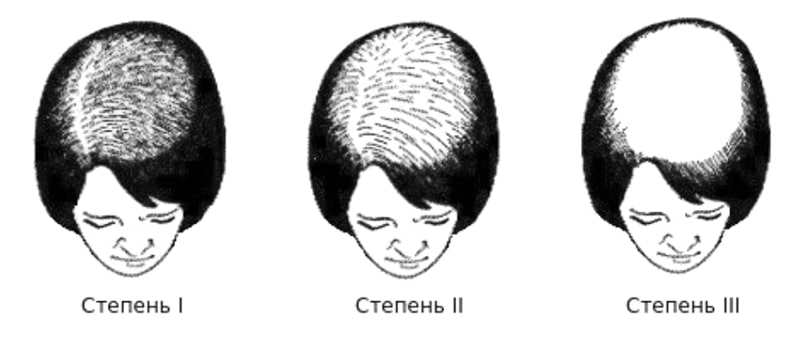
The newest preparations for hair restoration without withdrawal syndrome contain low molecular weight active ingredients. They are able to quickly restore follicles and reduce the negative effects of dihydrotestosterone.
COMPLICATIONS OF ANDROGENIC ALOPECIA IN WOMEN
The main complication of androgenetic alopecia in women is the complete loss of hair without the possibility of their natural restoration. This does not lead to loss of working capacity, deterioration of the general condition and does not require a long stay in the hospital. However, hair loss worsens the emotional state of patients and affects the quality of life. Patients may suffer from mild forms of anxiety, depressive and sociophobic disorders.
DIAGNOSIS OF ANDROGENIC ALOPECIA
For early detection and differential diagnosis with other alopecia, dermatoscopy is performed. Dermatoscopic signs of androgenetic alopecia are anisotrichosis (diameter variability of more than 20% due to hair thinning), peripapillary signs (brown halo around the follicle, yellow dots) and an increase in the number of vellus-like hairs.
When diagnosing, it is important to evaluate the function of the thyroid gland, the level of ferritin, zinc, vitamin D and prolactin. This is necessary to eliminate factors that can increase hair loss and aggravate the disease.
Patients with a history of irregular menstruation, an elevated body mass index, or skin signs of hyperandrogenism should be referred to an endocrinologist for possible PCOS (polycystic ovary syndrome) and HCHD (congenital adrenal dysfunction).
CLINICAL EXAMPLE #1
The patient is a 48 year old woman. She complained of severe hair loss on the top of her head. Diagnosis: androgenetic hair loss, stage II-III according to Ludwig. ⠀
The phototrichogram showed: more than four yellow dots in four fields at a magnification of 70 times; the average thickness of the hair is less in the frontal zone than in the occipital zone, when counting at least 50 hairs; more than 10% vellus hairs (less than 30 µm in diameter) in the frontal zone.Протокол лечения
- Shampoo against hair loss and hair growth ResedaOdor with capixil, biotin and vitamin complex.
- Deep cleansing of the scalp with ResedaOdor peeling for better penetration of topical preparations.
- Apply ResedaOdor SCC5 lotion in the morning and evening.
Therapy results
In one month of applying this scheme, the hair gained density, the loss was significantly reduced, the anagen hair phase was significantly lengthened.
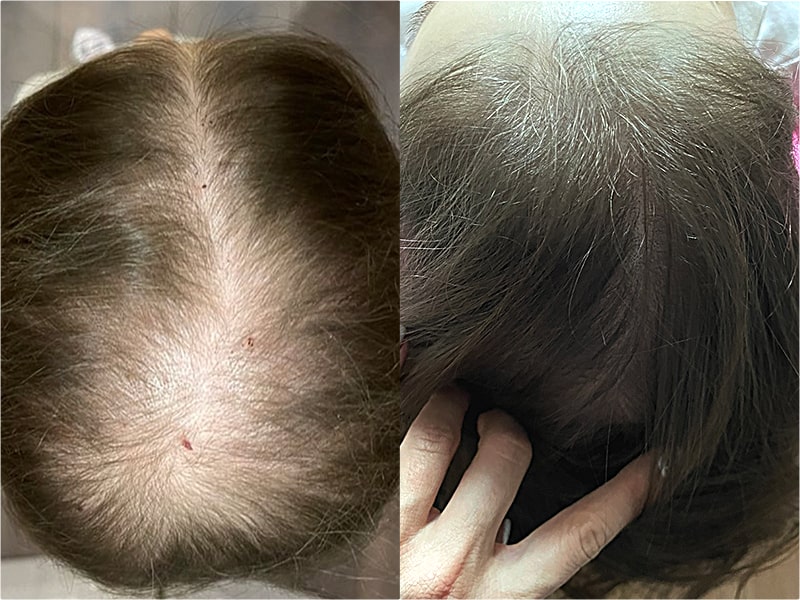
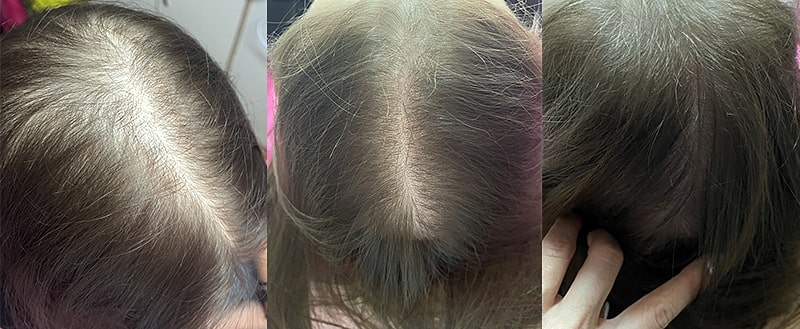
CLINICAL EXAMPLE #2
The patient is a man, 44 years old, somatically healthy. Complaints: loss of hair for 10 years and profuse dandruff, accompanied by itching. Diagnosis: androgenetic hair loss type Norwood-Hamilton II-III, seborrhea.
Phototrichogram showed: the ratio of the number of vellus hairs in the frontal and occipital parts of 1.5:1; the number of peripellar signs in the frontal and occipital zones - the ratio is 3:1; there are twice as many one-haired units in the frontal part as in the occipital part.
Treatment Protocol
- Seboderm ResedaOdor dandruff emulsion - getting rid of seborrhea by restoring the skin microbiome and suppressing the fungus Malassezia furfur.
- Apply ResedaOdor SCC5 lotion in the morning and evening.
- Shampoo ResedaOdor against hair loss and for hair growth.
Therapy results
The examination was carried out two weeks after the start of taking the drugs. There is an improvement in hair growth, an increase in their density, a decrease in hair loss, the microbiome has also recovered and the sensitive scalp has calmed down.
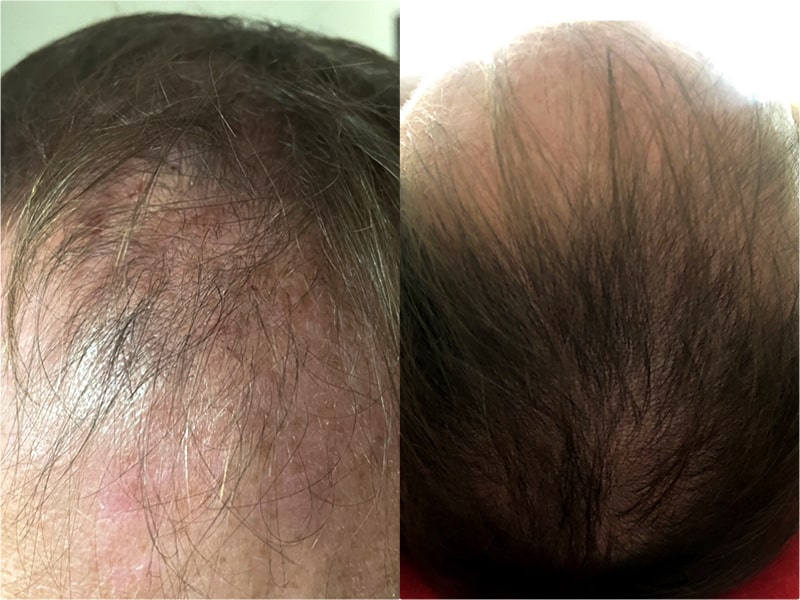
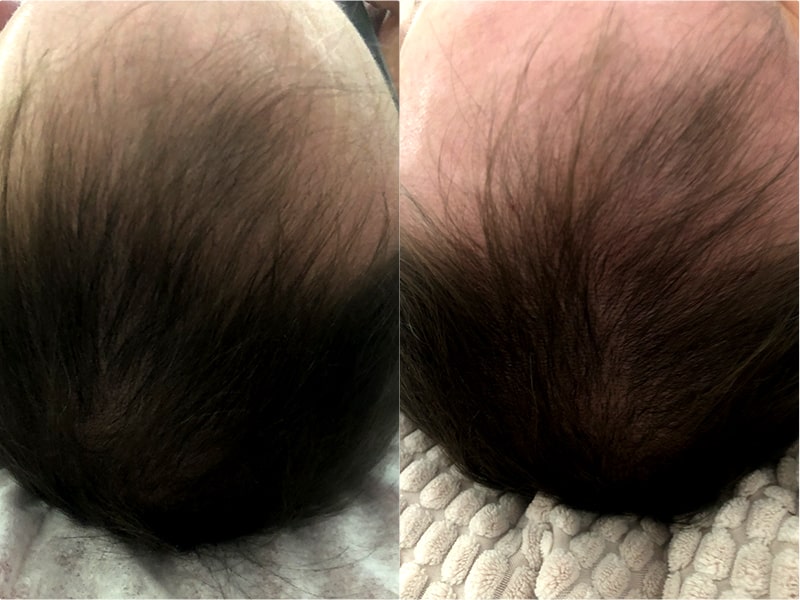
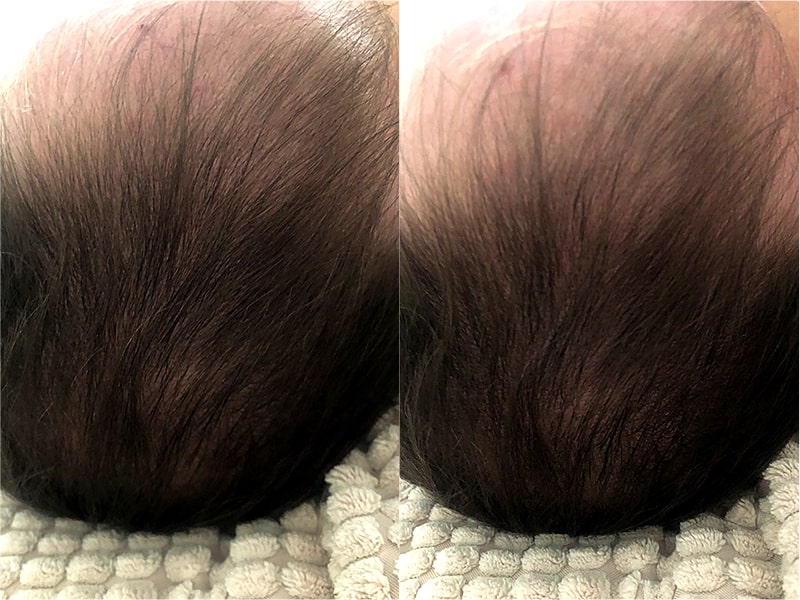
CONCLUSION
Androgenetic alopecia is a chronic disease and progresses without treatment. Minoxidil 2% is currently the officially recognized worldwide treatment for AGA in women. However, you need to know: if patients start treatment with minoxidil, then it should be for life, because withdrawal syndrome develops when they stop taking it. You should also be aware that this drug, like most antiandrogenic drugs, is not used in pregnant and lactating women. In the course of the work, we found that minoxidil can be replaced or supplemented with developments from Resedaodor, thereby eliminating or leveling the withdrawal syndrome.
